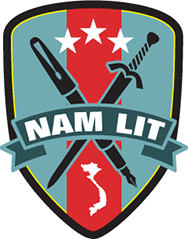 |
||||||||||||
|
November/December 2015 Seeing Into the Lives of Others: BY WAYNE KARLIN
Don’t make casual references to the Cold War, dominoes, JFK, Johnson, Nixon, Watergate, Laugh-In, M*A*S*H, or The Green Berets. Don’t assume they know who John Wayne was. Don’t even assume they know Sylvester Stallone. They haven’t seen Platoon or Apocalypse Now or Hamburger Hill or even We Were Soldiers, or if they have, they place them at the same level of reality as a Call of Duty video game. They may know some of the music—the Beatles, Doors, Stones, Hendrix—or at least have heard some of it, and maybe some even like it. If any of their elders fought in the war, your students may know a little more about it—though more often than not said parent or grandparent has preferred not to talk about the war, or to talk about it in ways he has learned are acceptable, or has locked it up in the attic like a deranged uncle. What may be the only thing they have heard about it—if not from relatives who are veterans but through popular culture and the zeitgeist—is that Vietnam veterans were demonized and spat upon by antiwar hippies and the main lesson of the war is not to have any more antiwar hippies and to slap on a support-the-troops bumper sticker or tie a ribbon to a tree, which will somehow prevent them. They also know nothing of military terminology or the realities of combat, unless (and I have had many more such students lately) they are veterans of the more recent wars. They also may not know how to find Vietnam on a map, let alone have any knowledge of the Geneva Accords, the difference between the NLF and the NVA and the ARVN (or what those initials stand for), the DMZ, the Tet Offensive, Khe Sanh, My Lai, Hanoi, or Saigon. If you show them the word “Hue” they will pronounce it like a certain assault helicopter. They may think the Vietnamese they see here all migrated from the Land of Nail Shops. Unless they are Vietnamese-Americans, they know little to nothing about Vietnam the country, its history, culture, and religions, and if they’re Vietnamese-Americans and young enough—and for the same reason as the kids and grandkids of American veterans—they will know little about the war. Though to be fair, neither do the young Vietnamese I’ve met in Vietnam. There it is. Get over it. The teacher of literature—in any genre—usually has to offer students some degree of historical and cultural context. Has to present students with the nest in which those works they read were hatched. Has to guard against regarding such students with contempt or despair. Has to understand they are as intelligent as any generation, their ignorance a product of our educational system. When you accept that, then when some students come along who actually know stuff, they will surprise and delight you even more. And in many ways, there has never been a better time to teach this subject because of the rich and varied abundance of literature about the war that has become available to us: works by American writers, whether long-published or newly discovered, whose writing has evolved and matured as they have, and the war literature of Vietnamese and Vietnamese-Americans. The latter not only provide students personalized experiences of the war, but also give them what can be the most deeply transformative effect of any literature: the experience of seeing the world through other eyes and other lives. When those lives belong either to our former enemies or to the allies we knew so little of, this transformative effect is bone-deep. It is the opposite of the dehumanization that is the bottom-line cause and eternal effect of war. That notion is powerfully examined in Tim O’Brien’s story-chapter in The Things They Carried: “The Man I Killed,” a close-reading and discussion of which I use to lead into and frame the Vietnamese literature section of the sophomore-level comparative lit course on the Vietnam War I teach. In the story, Tim, the avatar of himself O’Brien creates to be his central character, has just killed an enemy soldier. While staring at his body, he imagines the details of the man’s life, his corpse now “a constellation of possibilities.” It becomes apparent that Tim is projecting his own life onto the man: If he were born in Vietnam, this could be him. He is humanizing in the deepest way, envisioning his human connections with the man; in doing so, he is able to regain his own humanity, grieve for it, and move on. Students born after the war now have the opportunity to get those lives Tim yearns for from the stories of the people whose lives we no longer have to only imagine, a literature not available in the years immediately after the war. In my course, after we have read works depicting the American experience, choosing from, among others, O’Brien, Phil Caputo’s A Rumor of War, Chickenhawk by Robert Mason, Paco’s Story by Larry Heinemann, Karl Marlantes’s Matterhorn, and poetry by Doug Anderson, W.D. Erhart, George Evans, Yusef Komunyakaa, and Bruce Weigl, and once the context of Vietnamese history has been presented to them, students experience both the profound differences and yet the powerful commonality of the experience of war by reading NVA veteran Bao Ninh’s The Sorrow of War (a great novel to compare to Caputo’s memoir); female NVA veteran Le Minh Khue’s short stories about the effects of war on the women who fought in it; NVA vet Ho Anh Thai’s whimsical Behind the Red Mist, a sci-fi satire on postwar corruption; NLF veteran Da Ngan’s saga An Insignificant Family which follows its characters from the war in the Mekong Delta to present-day Hanoi; NVA vet Nguyen Du’s war and postwar poetry; Lan Cao’s novel Monkey Bridge, about a refugee family in Northern Virginia; the great memoir of the refugee experience by Nguyen Qui Duc: Where the Ashes Are; Andrew Lam’s essays in Perfume River and his short story collection, Birds of Paradise Lost; and the recently published novel by Viet Thanh Nguyen, The Sympathizer, a book whose sharp use of black humor recalls Catch-22. To name a few. As the Vietnamese have it: “A frog that sits at the bottom of a well thinks that the whole sky is only as big as the lid of a pot.” All of these works give those born after the war, before the war, or in the war, the opportunity to lift the lid, peer out over the rim of the well, and see into the lives of others as, at the same time, we glimpse our own mirrored souls.
|
||||||||||||
|
|
||||||||||||
|
||||||||||||
8719 Colesville Road, Suite 100, Silver Spring. MD 20910 | www.vva.org | contact us |
||||||||||||





















 First, assume they know nothing. Not when the war was fought, not where the war was fought, not why the war was fought (though that last one may still puzzle a lot of us). Along with the lack of direct knowledge about the war, you can also assume collateral ignorance about both American history and the popular culture of that time.
First, assume they know nothing. Not when the war was fought, not where the war was fought, not why the war was fought (though that last one may still puzzle a lot of us). Along with the lack of direct knowledge about the war, you can also assume collateral ignorance about both American history and the popular culture of that time.